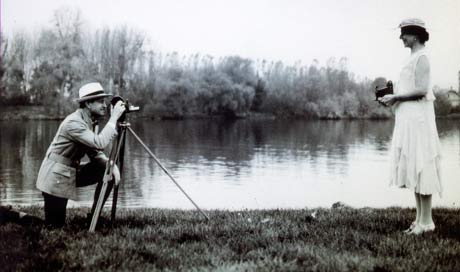Courses
Photography direction pre-production course with Tomàs Pladevall
Regardless of the medium used (photochemical, HD, 4K, etc.) every cinematographer faces in each production a series of decisions, prior to shooting, that will be vital in the aesthetics of the future work. From the choice of the type of photography or style in conversations with the director or the art director to the more purely technical ones such as the choice of the type and quantity of equipment, the time of the exterior shooting, or the intervention in the decisions of the shooting schedule. Knowing and mastering all the necessary elements before starting to shoot will give the cinematographer control of the situations that will subsequently develop.
This course will analyze all the processes and stages that must be taken into account by the director of photography before starting to shoot. From the visits to the locations to the calculation of the KW needed for each shot. From what conversations to have with the different departments to how to plan a sequence on location in continuity. All this through the knowledge of one of the most experienced cinematographers in Spanish cinema.
DURATION: 12 hours
PROFESSOR: Tomàs Pladevall AEC
Director of photography for 56 feature films and more than 400 short productions Tomàs Pladevall is one of Spain’s most professionally recognized cinematographers. He has experimented with all photochemical and digital formats, including 70mm and 3D IMAX for large screens and was one of the pioneers of high definition in Spain. Tren de sombras (José Luis Guerín), Leo (José Luis Borau), Cineastas contra magnates (Carlos Benpar) or Magic Journey to Africa (Jordi Llompart) are just some of the feature films whose photography he has directed. He also combines his professional work collaborating with different film teaching centers and directs the Master of photography direction at the Escac school in Barcelona.
Here you can see its IMDB file
EQUIPMENT EMPLOYED: This is a theoretical course in which the teacher will have the necessary means to exemplify the concepts presented: projector, film material, documentation, etc.
AIMED AT: Directors of photography, camera operators, illuminators, gaffers, electricians, and any member of the camera crew.
PREVIOUS KNOWLEDGE: Basic knowledge of cinematography and lighting.
PRICE: 340 ¤ (300 ¤ with early booking discount) With possibility of discounts (not cumulative with each other or with the early booking discount)
WHEN: Consult next call for proposals
WHERE: Ondas Formación. See in Google Maps. If you need any kind of information you can contact 709 MR by email or phone (668840783).
COURSE CODE: Forthcoming
GENERAL OBJECTIVES:
- Learn how to break down the necessary processes to be carried out in photographic pre-production.
- Plan everything necessary for proper lighting prior to the shoot
- Decide on the most appropriate aesthetics for each production based on the needs and requests of each production.
CONTENTS
1: PRE-PRODUCTION PHASES
- General Concepts
- Three-phase scheme
- Recruitment issues
- Script reading meeting
- Meetings with management, production, artistic direction, etc.
- Post-production meeting (workflow forecast)
- Training of camera crews, electricians and machinists
- Contracting of services
- Script (underlines and notes) / Storyboard
- Scale
- Breakdowns
- Calendar-fiction
- Latitudes shooting schedules
- Minutes
- Initial content study (camera, lighting, processes, CGI, …)
2: IMAGE REFERENCES
- Elaboration of the photograph
- Pictorial references (examples classified by style)
- Photographic references (examples classified by period)
- Film references (examples classified by style)
3: LOCATIONS (OUTDOOR / INDOOR)
- Daylight
- Solar parameters
- Solar softwares (interpretation of some examples)
- Material to go to locate
- Observations and notes
- Pre-planning in the field
- Photos and recordings
- Observations on indoor locations
- Locators
- Locations with direction, production, art direction
- Gaffer locations
- Forillos
- Set work
4: VISIONED
- Photographs of locations (compared to film stills)
5: LISTINGS AND TESTS
- Notes for different teams (ay.direction, production, cinematographer, gaffer, machinist, special effects shooting, special effects post-production)
- Photo proofs
- Camera tests
- Photogenic tests
- Lists of camera material. Basic material. Eventual material. Second chamber or second units
- Lists of lighting equipment
- Alternatives in its elaboration
- Approximate control of the amount of light
- Exposure forecasts
- Base material. Blocks by calendar or by decorations
- Machinist’s equipment list
- Economic selection criteria
- List of purchase material (consumables, etc.)
You can download the documentation to take the course here
For more information and to reserve a place, please send an e-mail to info@709mediaroom.com.


